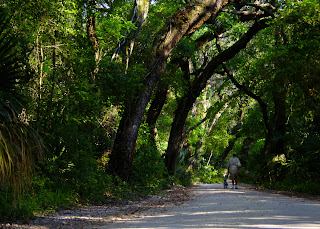I just started NYIP Unit 2, and as I was perusing the kit I noticed a 18% gray card with it. A gray card is used to help set white balance for a scene. This got me thinking about some other, more fancy color cards online, specifically the one made by
xrite. Seems like a great idea. I already own a calibration tool for my monitor and I swear by it. The issue I have is how do I streamline the whole process? How to get color I see in camera to match what I see on screen, to what is printed out. Hopefully this would help simplify things. However, IT IS $100!!! Sorry, no can do pal. I can drop $90 for a great tripod (in the mail, review later this week), and I have considered saving up for a new camera body ($500 to $1,500 depending on my mood). But I just cannot part with a Benjamin for something like this, especially when I can do it myself!

I went to the hardware store to see if they had some kind of paint color wheel. Yeah, that was too easy. Well, I had the entire freaking rainbow to choose from in the sample cards provided by the paint retailers (Free BTW!). The hardest selections were the black and white cards. I had to grab a white card and compare it to other white cards to see which was the true white, and the same with black. For the colors, of course nothing is labeled like you would want (Crayola colors would be nice). There was no true blue or green or orange. I had plenty of sunshine gold or harvest wheat, just no yellow. So I grabbed as many of each color (lucky for me each sample card had 3 similar colors). Now all I needed was something rigid yet flexible to mount them on. I found the ideal medium in the signs department, you know like the plastic yard sale signs. I grabbed a tow away zone sign for $5 and took 45 color samples home with me. I cut the samples into one inch squares (except for the black and white ones which I mistakenly assumed were the two most important colors), which I made one by two. More on that later.
I simply arranged the one inch squares into a pattern I found appealing and proceeded to use spray adhesive to mount them on the plastic. Once in the grid, I needed a bumper to both segregate the colors and protect the card itself from getting dirty or damaged. Fortunately my wife had purchased some craft foam, and I swiped a sheet of black (similar to the stuff some people use on a flash to direct the light). This was the longest part of the project because a wrong move could slice a grid right off. So I cut squares with a quarter inch border between each, sprayed it with adhesive and slowly made sure to line up the seams so they did not show. Finally I trimmed the plastic even with the foam and ta-dah! One color checker card for under $5.
I also made a smaller version, about half the size of a credit card. I used a hole punch and obtained a sample from each color I had in the large checker, then punched holes in a strip of leftover foam. I mounted it on a piece of plastic, then put a bit of glue on the back of each punched out color circle. I placed it in a hole and smoothed it down with the end of a bamboo skewer. Done. Ten minutes max and I can use it with my macro photography.
Alright, so now the bad news. I assume that the colors used in the official color checker are standardized, or at least a known color value. I am sure they also have software that calibrates to this known value. I do not. I have 26 colors that I thought looked like what I wanted, and using these colors I eyeball them on my monitor and hope for the best. When I loaded these up on my computer they initially looked decent, and Lightroom allows me to use the eyedropper tool to select a color to change the overall temperature of the image. When I clicked on the white sample little happened. Upon further investigation I discovered that I was supposed to select a neutral color, not white. This is where a known 18% gray color would come in handy. I have three shades of gray, but I have no idea how close to 18% any of them are. However, through experimentation I discovered that using the gray samples made significant changes to the color samples. The colors just leaped of the monitor! So fine, I do not have the fancy software or the carrying case for my color checker. What I do have is $95 in my pocket and a pretty decent tool in my arsenal. I am cool with that.
If I did it again there is not much I would do different. I would look into finding a better way to make holes in the foam, perhaps a punch of some sort. The only thing I do not like is how the foam came out uneven and unprofessional. A punch would fix this, and I like how the circles look on the small card. But I do not own a punch so it would drive the cost of this project up a little.
Once again, thanks for reading.
Joe






















